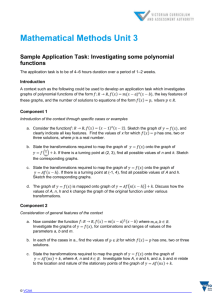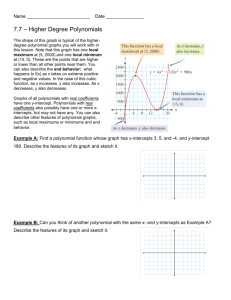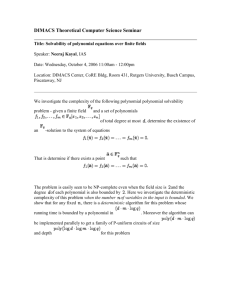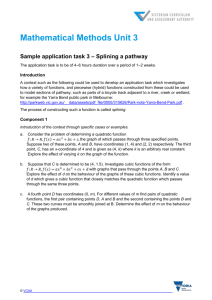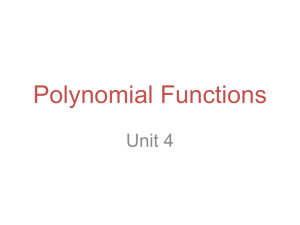How many different shapes of graphs are there?
advertisement
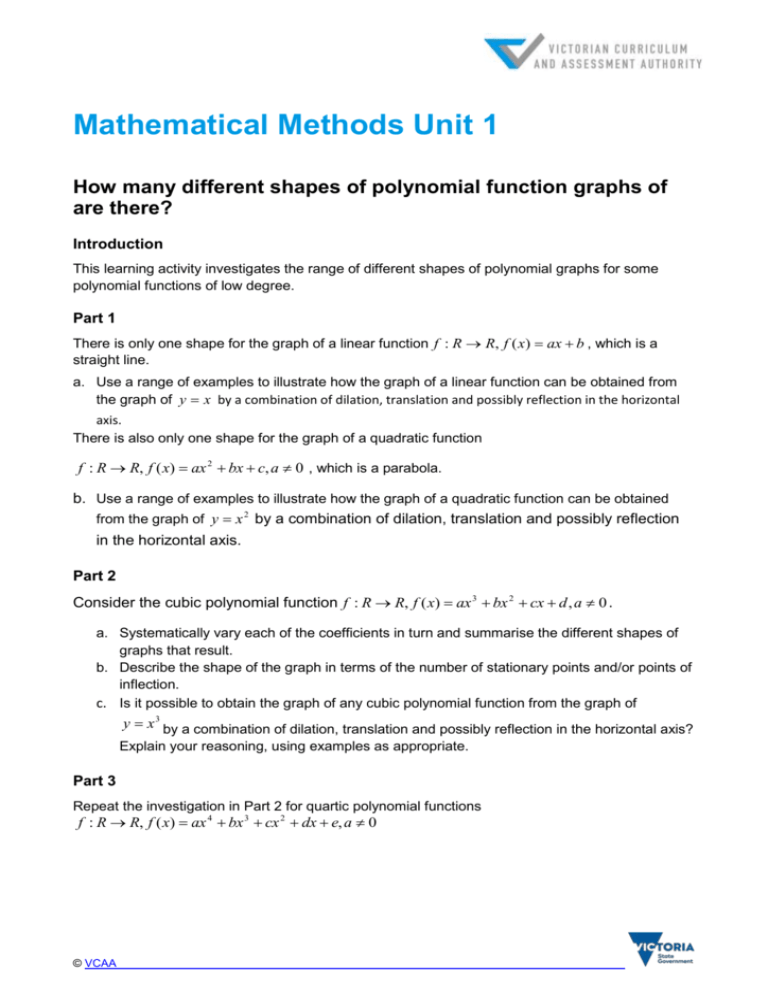
Mathematical Methods Unit 1 How many different shapes of polynomial function graphs of are there? Introduction This learning activity investigates the range of different shapes of polynomial graphs for some polynomial functions of low degree. Part 1 There is only one shape for the graph of a linear function f : R R, f ( x) ax b , which is a straight line. a. Use a range of examples to illustrate how the graph of a linear function can be obtained from the graph of y x by a combination of dilation, translation and possibly reflection in the horizontal axis. There is also only one shape for the graph of a quadratic function f : R R, f ( x) ax 2 bx c, a 0 , which is a parabola. b. Use a range of examples to illustrate how the graph of a quadratic function can be obtained from the graph of y x 2 by a combination of dilation, translation and possibly reflection in the horizontal axis. Part 2 Consider the cubic polynomial function f : R R, f ( x) ax 3 bx 2 cx d , a 0 . a. Systematically vary each of the coefficients in turn and summarise the different shapes of graphs that result. b. Describe the shape of the graph in terms of the number of stationary points and/or points of inflection. c. Is it possible to obtain the graph of any cubic polynomial function from the graph of y x 3 by a combination of dilation, translation and possibly reflection in the horizontal axis? Explain your reasoning, using examples as appropriate. Part 3 Repeat the investigation in Part 2 for quartic polynomial functions f : R R, f ( x) ax 4 bx 3 cx 2 dx e, a 0 © VCAA Mathematical Methods Unit 1 Areas of study The following content from the areas of study is addressed through this task. Unit 1 Area of study Content dot point Functions and graphs 4, 6 Algebra - Calculus - Probability and statistics - Outcomes The following outcomes, key knowledge and key skills are addressed through this task. Unit 1 Outcome Key knowledge dot point Key skill dot point 1 4 11, 13 2 1, 2, 3, 4 2, 4, 5 3 1, 3 2, 4, 5, 10, 11 © VCAA Page 2




